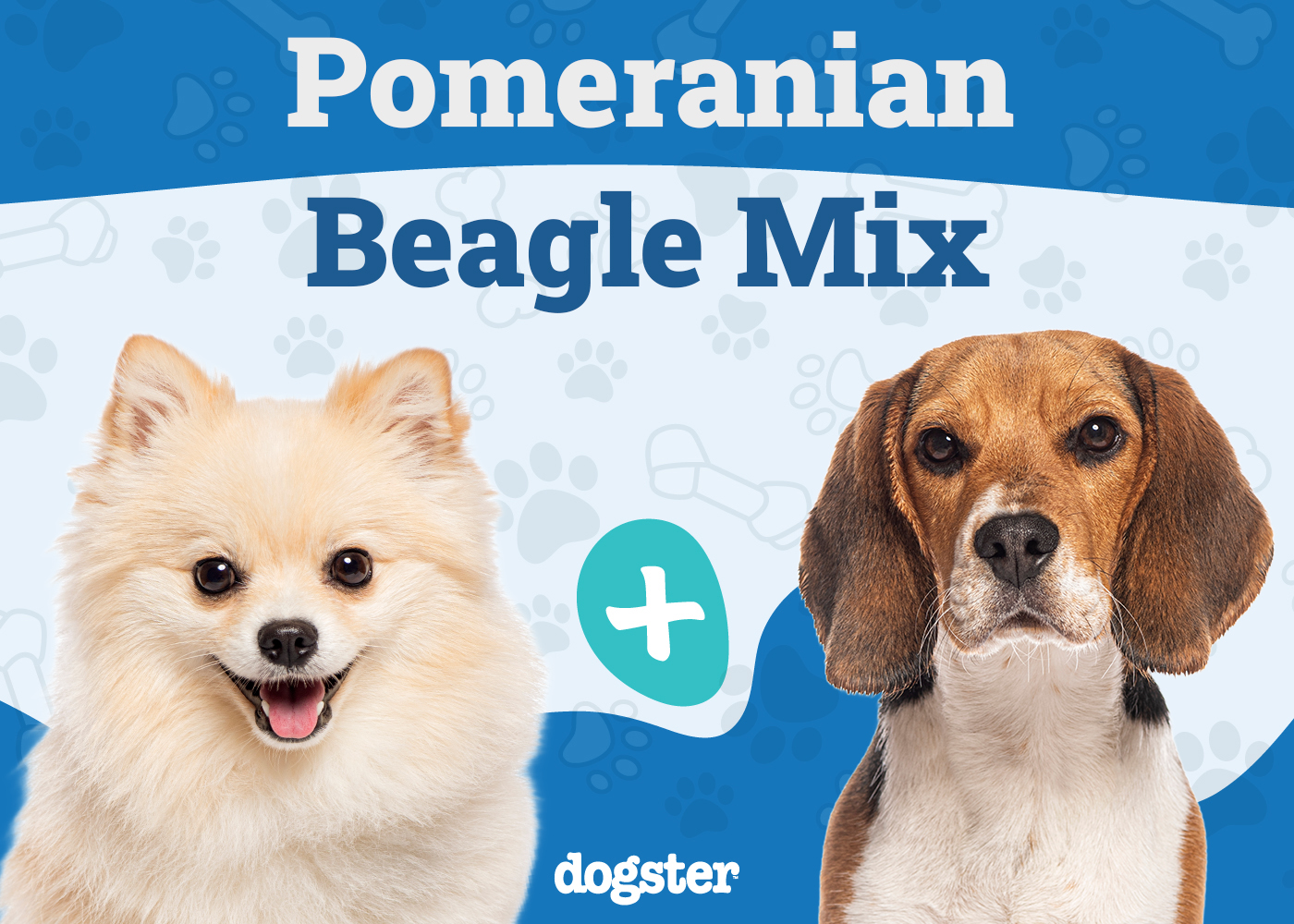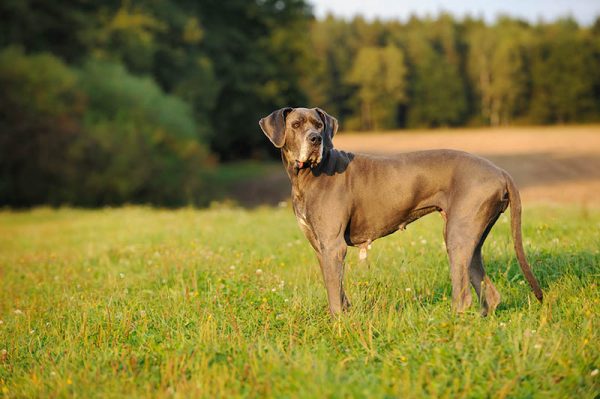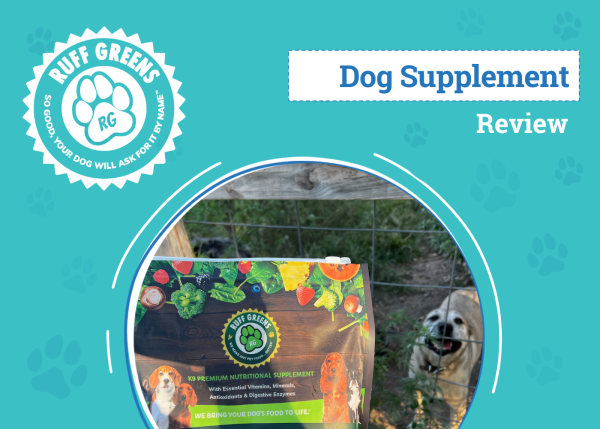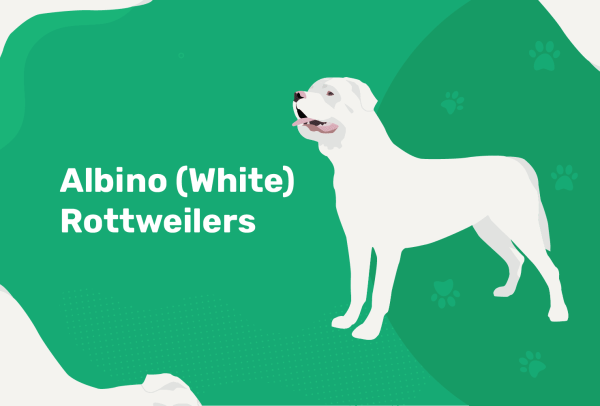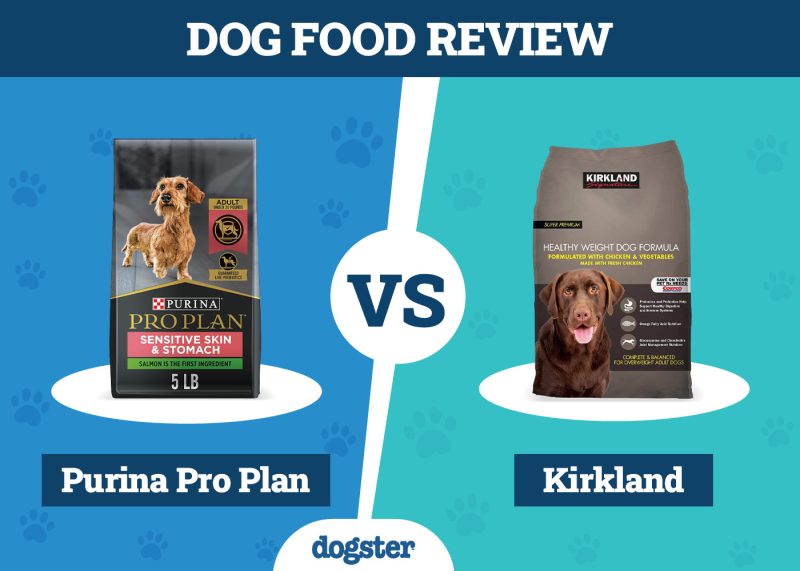In this article
View 8 More +The Pomeagle, sometimes referred to as the Beagle Pom is a hybrid dog that is a result of mixing the small, lively Pomeranian with the happy, lovable scent hound, the Beagle. As with any hybrid, they can inherit their physical appearance and personality traits either from both parents or more one parent than another.
Breed Overview
Height:
6–12 inches
Weight:
5–25 pounds
Lifespan:
12–15 years
Colors:
Brown, red, fawn, cream, white, brindle, black, sable
Suitable for:
Individuals, families with older children
Temperament:
Playful, affectionate, curious, loveable
Pomeagles are typically 6 to 12 inches in height and weigh anywhere from 5 to 25 pounds. Their appearance can differ greatly due to their parent breeds looking so vastly different. Their coats can be brown, red, fawn cream, white, brindle, black and sable and are typically a combination of one or more colors.
Pomeagles are known for being very lovable and affectionate toward their owners. They are lively, curious, and playful as well. As a mixed breed, they tend to have fewer health issues than their purebred parents. Pomeagles generally live anywhere from 12 to 15 years.
Pomeagle Characteristics
Pomeagle Puppies
There are some considerations you will want to mill over before bringing a Pomeagle home. They can be stubborn and more difficult to train than your average dog. Both Pomeranians and Beagles can be difficult to housetrain, leaving the Pomeagle with the same downfall.
They have the potential to get wanderlust from their Beagle parent. Their strong scent leads to curiosity and curiosity leads to exploration. When a Beagle catches a scent, it will stop at nothing to follow it. Having a secure fence is important and this is not a dog you want to give off-leash privileges to.
The Pomeranian genetics can result in “small dog syndrome,” which won’t make the Pomeagle the ideal pet for everyone. They can be headstrong and try to assert their dominance over people and other animals. Separation anxiety can be a concern as well.
They may be wary of strangers but will bond closely with their owners and not enjoy being left alone. Boredom and loneliness can result in negative and destructive behavior. Excessive barking and howling can be a concern for this hybrid, as both the Pomeranian and Beagle are not quiet breeds.
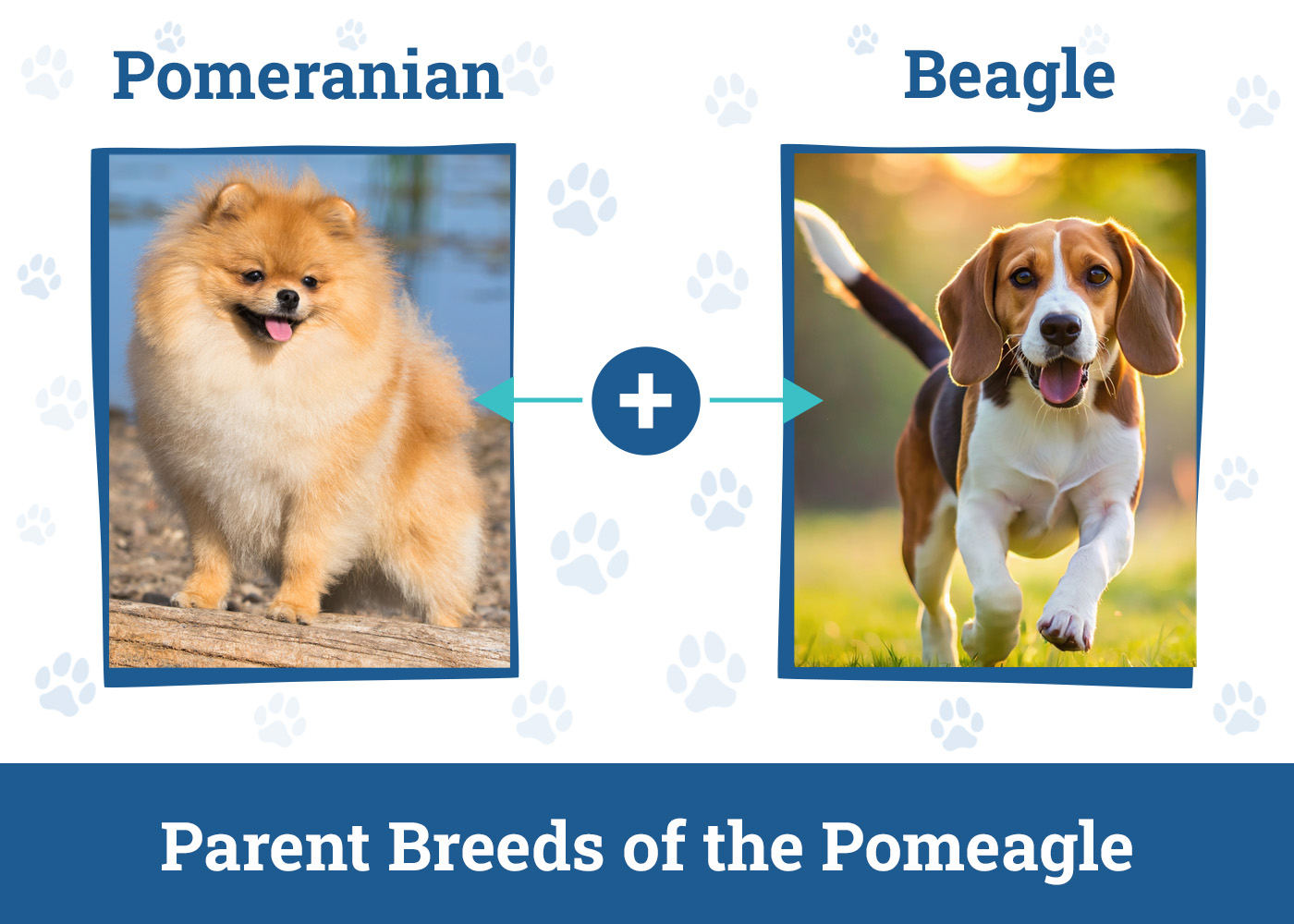

Temperament & Intelligence of the Pomeagle 🧠
Pomeagles are intelligent, playful, and adventurous little dogs. They have glowing happiness about them that is contagious. You can expect them to be very affectionate and lovable with their owners but cautious of strangers. They will have no issue alerting you of any suspicious people or animals that infiltrate their space.
Since they can get their temperament from either or both parent breeds, it is hard to tell exactly what your dog will act like. The Pomeagle isn’t generally as fearful as the Pomeranian, but they could exhibit fear-based behavior, especially if they are on the smaller side. While this is an intelligent dog, it will be more challenging to train due to overall stubbornness.
Their intelligence and curiosity can leave them easy to bore if they are not given the needed amount of exercise and attention. You can expect a dog that loves adventure and will happily investigate anything that strikes their interest. With proper training and socialization from a young age, a Pomeagle can make a wonderful, loving companion.
Are These Dogs Good for Families?
The Pomeagle can make a great family pet, especially for families with older children. They may not do as well with young children since they can be less tolerant of little ones who don’t yet have the know-how to treat and handle a dog. They won’t have as much patience as some other hybrids will. Proper training and early socialization are very important to begin at a young age.
Does This Breed Get Along with Other Pets?
Pomeagles can get along fine with other pets if they are introduced properly and socialized from an early age. Their Pomeranian genetics can leave them with a jealous streak and a tendency to try and dominate other pets in the home. This may not go over well with other animals so if your Pomeagle exhibits this type of behavior, you will want to address it.
The Beagle is a scent hound that does have a prey drive that can be passed down but if introduced in puppyhood at a young age, you shouldn’t have too much trouble with the Pomeagle and smaller pets. If you plan to introduce an adult dog to new animals, it’s best to do so properly and with caution.

Things to Know When Owning a Pomeagle:
Food & Diet Requirements
Pomeagles will need to feed a high-quality kibble geared toward small breeds that are appropriate for their size, age, and level of activity. This hybrid is undoubtedly prone to obesity so be sure to regulate their portions, avoid table scraps, and ensure you aren’t providing too many treats.
It’s always recommended to discuss your dog’s dietary needs directly with your veterinarian. They can assist you in coming up with the perfect meal plan to keep your dog healthy and happy.
Exercise
The Pomeagle is an energetic dog that will require about 30 minutes or more of daily exercise. You don’t want this hybrid to get too bored, as this can result in destructive behavior. They can be prone to chewing so it’s a good idea to keep a variety of toys around for their entertainment.
Taking your Pomeagle out for daily walks, romps around the yard, or playtime filled with various activities will keep them both mentally and physically stimulated, which will leave you with a better-behaved companion. They have the potential to do well with apartment living if their exercise needs are regularly met.
Training
Training a Pomeagle can be a challenge. They are a very intelligent mixed breed, but they are stubborn and bore easily. Potty training may pose a challenge since both parent breeds can be more difficult to potty train than others. You will need to start training at a very young age and remain consistent.
Using positive reinforcement and keeping the training interesting is important for this hybrid. They can have shorter attention spans so short training sessions tend to be more successful. Firmness and patience will go a long way with a Pomeagle.
Grooming ✂️
The coat of the Pomeagle will vary. They can have the long, thick fur of the Pomeranian that needs to be brushed and trimmed regularly, the short, smooth coat of the Beagle that is much more low maintenance, or a combination of the two. Different littermates can have different coat types.
In general, brushing them once per day and once per week bathing should work just fine. If they have a more Pomeranian-style coat you may want to enlist the help of a professional groomer. Both the Pomeranian and the Beagle shed a moderate to a high amount, but your daily brushing will help.
Regular nail trimming, tooth brushing, and ear inspections will need to be included on your Pomeagle’s maintenance list as well. It is important to get them used to all types of grooming at a young age to make it comfortable for your dog and easy for you or your groomer.
Health and Conditions
Designer dogs tend to have fewer genetic health issues than their purebred counterparts. The Pomeagle is an overall sturdy and healthy dog that can develop some health concerns from both parent breeds. Some of these health concerns can be prevented with proper care, such as obesity and dental disease.
- Luxating Patella
- Allergies
- Tracheal Collapse
- Cataracts
- Hypothyroidism
- Obesity
- Dental Disease
Male vs Female
Since the Pomeagle is a mix between two purebred dogs, their personalities and physical characteristics tend to vary depending on their lineage rather than whether they are male or female. Males can be larger than females, but this hybrid does have a significant size range and an individual’s size will be much more dependent on whether they take more after the Pomeranian or the Beagle.

3 Little-Known Facts About the Pomeagle
1. Pomeranians Weren’t Always So Tiny
It may be hard to believe, but it is true! These tiny dogs started off weighing anywhere between 20 and 30 pounds as opposed to the now 3 to 7 pounds. Their lineage can even be traced back to large sled dogs closely related to the American Eskimo Dog, the Siberian Husky, the Norwegian Elkhound, the Alaskan Malamute, and the Samoyed.
2. Beagles Have 3 Different Vocalizations
The name “Beagle” is believed to be derived from the French word “begueule,” which means “gaped throat.” Beagles can make three different sounds including the standard bark, a howl, and a bay which is a sound that closely resembles a yodel.
3. Pomeagles Have Received Designer Dog Recognition
Designer dogs are growing more and more popular as time goes on. Pomeagles are recognized by four different designer dog organizations:
- American Canine Hybrid Club
- Designer Dogs Kennel Club
- Dog Registry of America, Inc.
- International Designer Canine Registry

Conclusion
The Pomeagle is a lively, curious little dog that can vary significantly in appearance. They can take after the tiny but fierce little ball of fluff that is the Pomeranian or they can be more like the adventurous, happy Beagle with their fantastic sense of smell and adventure.
Regardless of which parent they take after, or if it’s a combination of the two, they will likely be a challenge to train and may like to run off and explore. They can be wary of strangers and visitors but will be affectionate and loving with their owners. They may not be the best choice for families with small children but will do great with individuals or families with older children that can keep up with their activity needs.
You may want to read this next: Pomeranian Mixes
